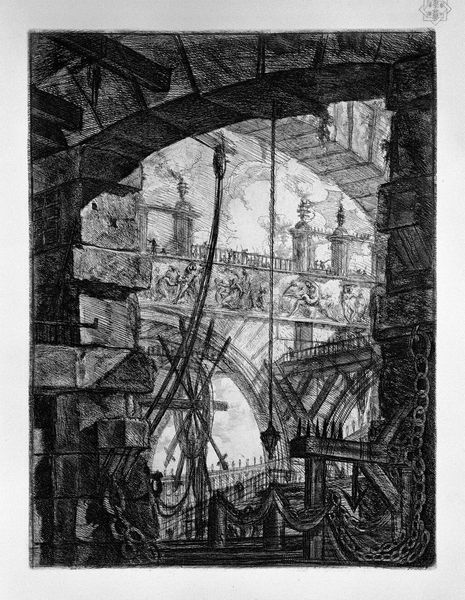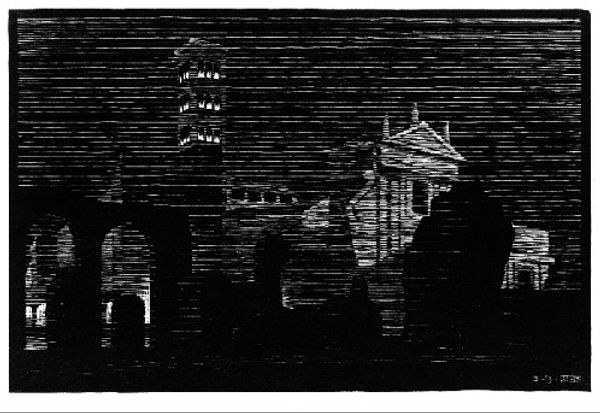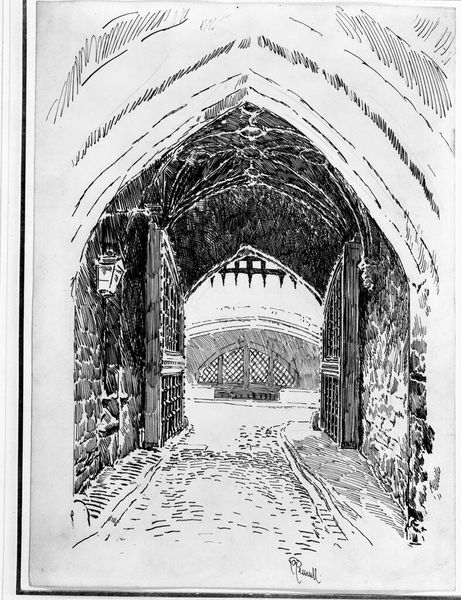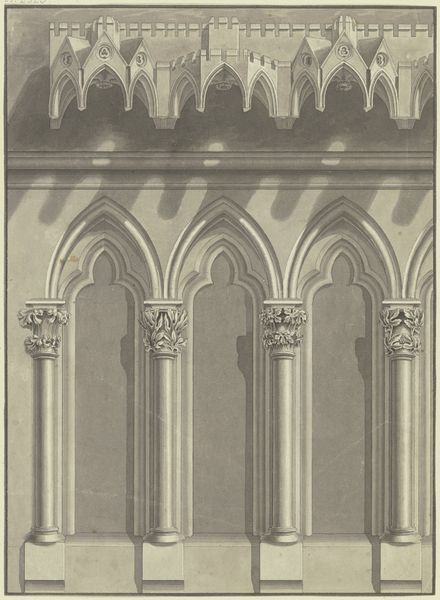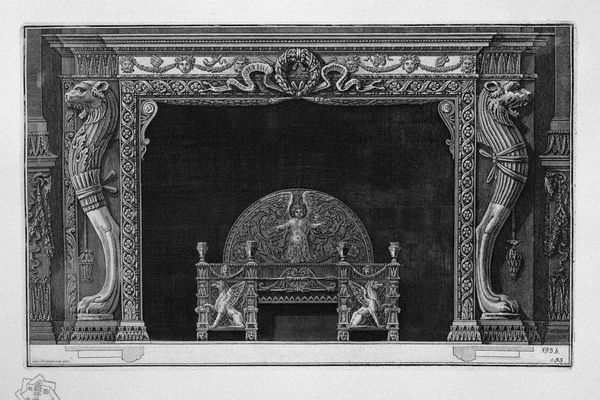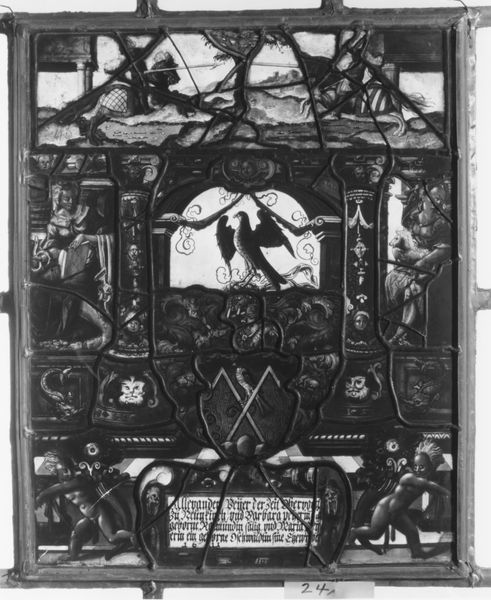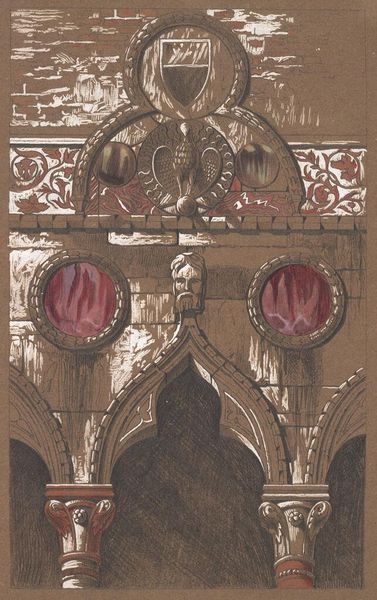
print, ink
# print
#
landscape
#
digital print
#
ink
#
geometric
#
arch
#
cityscape
#
italian-renaissance
#
building
Copyright: M.C. Escher,Fair Use
M.C. Escher’s "Venice (October 1936)" etching masterfully captures the Doge's Palace arcade, framing the city beyond. The ogee arches, with their trefoil tops, are a Gothic flourish, symbols of transition, gateways between worlds. These arches, seen in the Doge's Palace, aren't isolated; they echo in Islamic architecture, and in the sacred spaces of Gothic cathedrals, always pointing to something beyond. The pointed arch, in its various forms, appears throughout history, symbolizing aspiration and divine connection. Escher intuitively uses these forms, engaging our collective memory. The arches, like the proscenium of a stage, invite us to consider Venice itself as a theater of human experience. They act as a psychological frame, drawing us into the dreamscape of a city built on water. The cultural memory of Venice is thus evoked, engaging viewers on a profound level. This symbol has resurfaced and evolved, taking on new meanings in different historical contexts, and will continue to do so.
Comments
No comments
Be the first to comment and join the conversation on the ultimate creative platform.




